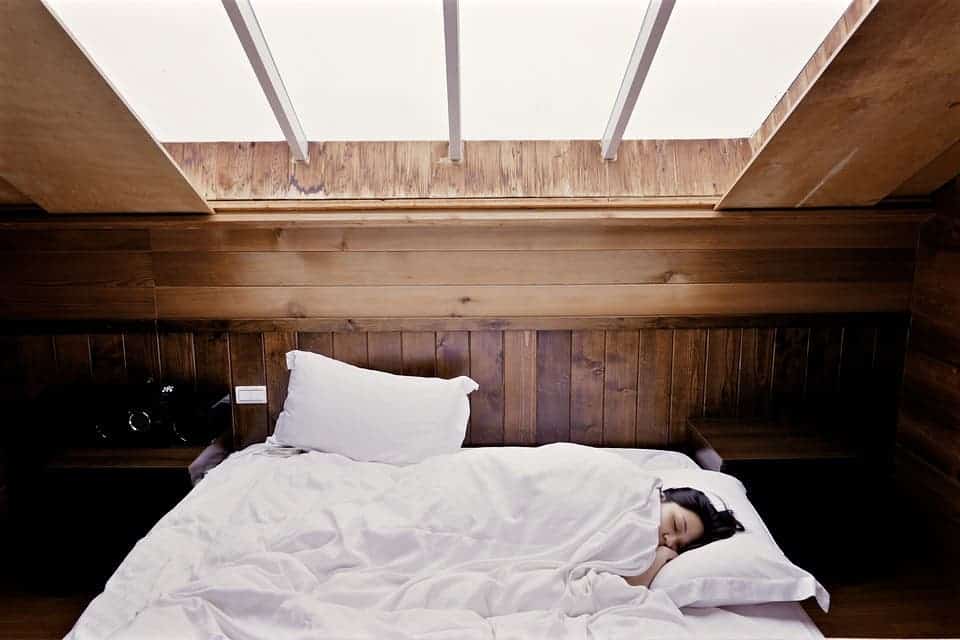British researchers at the University of Sheffield surveyed individuals on their quality of sleep and use of music as a sleeping aid. The study, which is the first to perform such an investigation on the general population, found that respondents who use music as a sleep aid do so because they think it blocks external stimuli, induces a mental state conducive to sleep, offers unique properties that stimulate sleep, or simply because it’s become a habit.

Approximately 50 to 70 million American adults report having problems sleeping. The widespread problem has serious physical and economic consequences, with studies linking it to a range of health issues. For instance, studies show that even a single night of poor sleep can impair short-term memory. Consistent poor sleepers are more likely to report lower levels of happiness and more feelings of depression. As a result of inefficient cognition, improper sleep also increases the rate of work-related and driving accidents.
To improve sleep, most people turn to pharmaceutical sleeping aids, and the sharp increase in sales of such drugs around the developed world suggests that a good night’s rest is becoming harder to find. In the UK, 1 in 10 adults takes some form of pharmaceutical intervention on a regular basis to improve sleep, a 31% increase between 2006 and 2011. In the United States, sleep-related prescriptions jumped from 5.2 to 20.8 million between 1999 and 2010, marking a 293% increase.
However, sleep aids have been linked to various negative side effects that become worse with long-term use. These include nausea, dizziness, dependency, withdrawal symptoms, amnesia, seizures, and an increased risk of mortality. Music, on the other hand, is free and bears no negative side effects.
Previously, studies have suggested that music relieves anxiety and the subjective effects of pain. One study, in particular, found that music increases oxytocin — a powerful hormone that regulates social interaction and sexual reproduction — and, accordingly, promotes relaxation.
Given the link between stress and poor sleep, it makes sense that music has sleep aid properties. The efficacy of music as a sleep aid has mostly been studied in individuals with chronic insomnia or hospitalized patients. One such study showed that listening to music for 45 minutes prior to sleep for four days shortened stage 2 duration and extended REM sleep in adults with chronic insomnia. Most dreams occur during rapid eye movement (REM) sleep, and it is thought to play a role in learning, memory, and mood.
The new study performed by Tabitha Trahan and colleagues at the Department of Music at the University of Sheffield is the first to survey the use of music as a sleep aid in the general population. In total, 62% of the 651 respondents confirmed that they play music to help themselves sleep, and described 14 musical genres comprising 545 artists. Most respondents (31%) fall asleep to classical music, followed by rock (10.8%), and pop (7.5%).
According to the findings, even those who don’t suffer from sleep disorders use musical intervention in their everyday lives to improve the quality of their sleep. Younger people, who are generally more musically engaged, were more likely to use music to sleep better.
The participants believe that music both stimulates sleep and blocks an internal or external stimulus that would otherwise disrupt sleep. The self-reported answers, however, represent a study limitation. So the findings could represent respondents’ beliefs about how music helps them sleep, rather than a conclusion about the psychological and physiological effects of music. Nevertheless, the results suggest that anyone could sleep better at night with just about any kind of music.
“The largest ever survey of everyday use of music for sleep reveals multiple pathways to effect that go far beyond relaxation; these include auditory masking, habit, passion for music, and mental distraction. This work offers new understanding into the complex motivations that drive people to reach for music as a sleep aid and the reasons why so many find it effective,” the authors concluded in the journal PLOS ONE





